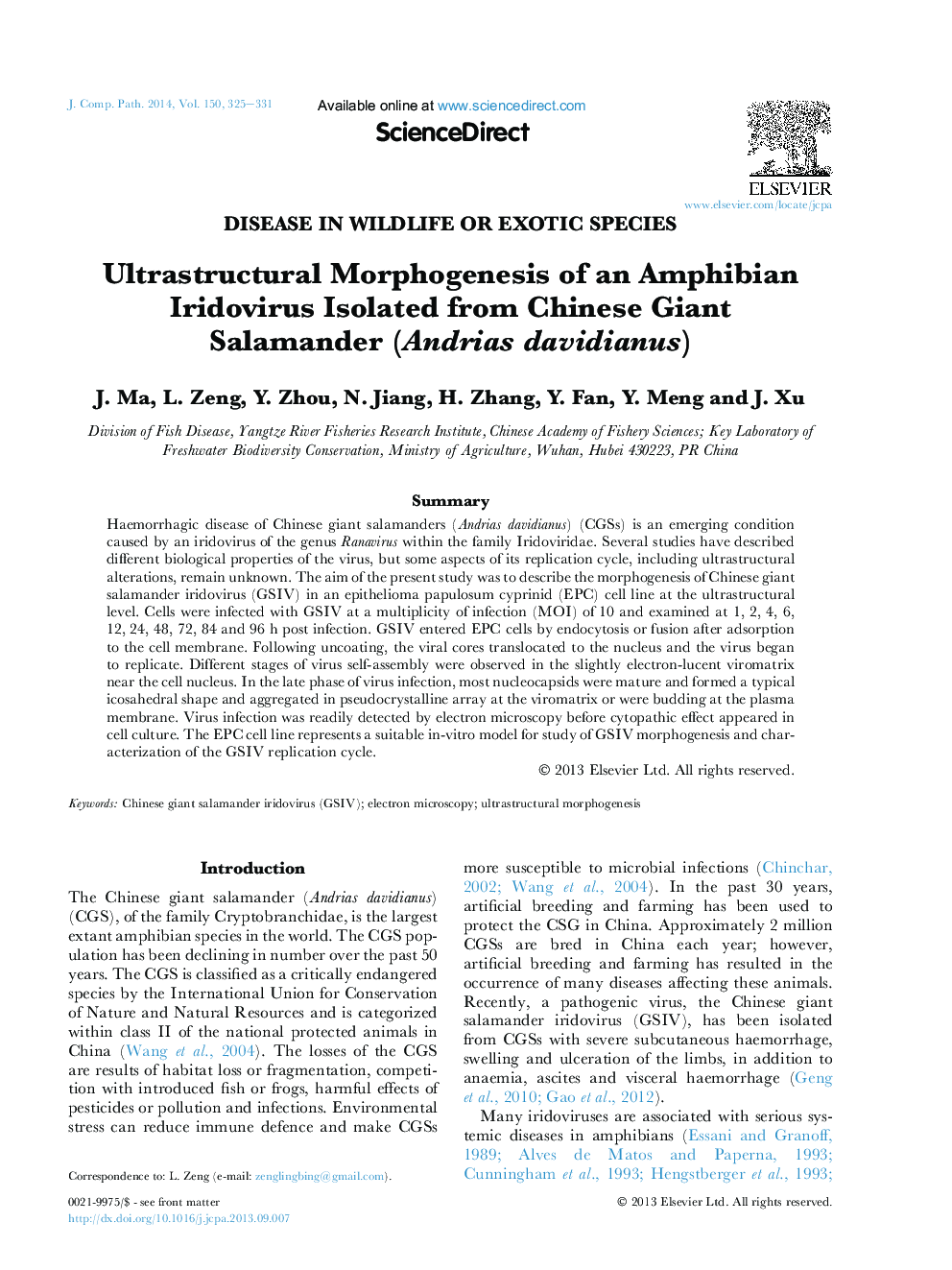| Article ID | Journal | Published Year | Pages | File Type |
|---|---|---|---|---|
| 8500745 | Journal of Comparative Pathology | 2014 | 7 Pages |
Abstract
Haemorrhagic disease of Chinese giant salamanders (Andrias davidianus) (CGSs) is an emerging condition caused by an iridovirus of the genus Ranavirus within the family Iridoviridae. Several studies have described different biological properties of the virus, but some aspects of its replication cycle, including ultrastructural alterations, remain unknown. The aim of the present study was to describe the morphogenesis of Chinese giant salamander iridovirus (GSIV) in an epithelioma papulosum cyprinid (EPC) cell line at the ultrastructural level. Cells were infected with GSIV at a multiplicity of infection (MOI) of 10 and examined at 1, 2, 4, 6, 12, 24, 48, 72, 84 and 96Â h post infection. GSIV entered EPC cells by endocytosis or fusion after adsorption to the cell membrane. Following uncoating, the viral cores translocated to the nucleus and the virus began to replicate. Different stages of virus self-assembly were observed in the slightly electron-lucent viromatrix near the cell nucleus. In the late phase of virus infection, most nucleocapsids were mature and formed a typical icosahedral shape and aggregated in pseudocrystalline array at the viromatrix or were budding at the plasma membrane. Virus infection was readily detected by electron microscopy before cytopathic effect appeared in cell culture. The EPC cell line represents a suitable in-vitro model for study of GSIV morphogenesis and characterization of the GSIV replication cycle.
Keywords
Related Topics
Life Sciences
Agricultural and Biological Sciences
Animal Science and Zoology
Authors
J. Ma, L. Zeng, Y. Zhou, N. Jiang, H. Zhang, Y. Fan, Y. Meng, J. Xu,
